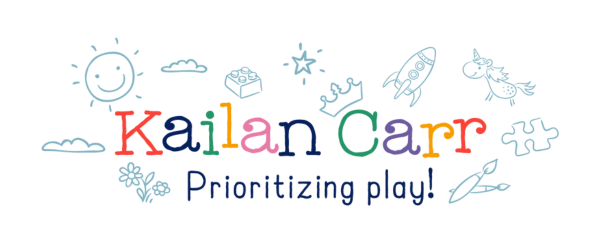
Parents and caregivers want what is best for their children. And years of research have shown that the best toys for kids are ones that are open-ended and allow children to take charge of play. You could consider them a tool for discovering the world around them and who they are on the inside..
But this year, there will be new toys on the shelves (and in catalogs and in commercials) this holiday season with AI (Artificial Intelligence) embedded inside them.
They may look like a friendly robot or they may be even more disguised as a cute stuffed creature. They are designed to mimic human characteristics and emotions.
But buyer beware!!
Marketing companies (who mainly care about profits and lack expertise in child development I might remind you) want you to think it’s the next best thing, the toys of the future! They tout them as a way to increase imagination levels through interactive experiences. And some are being extra sneaky when they have the gall to promote them as “screen-free”!
Here’s what AI toys REALLY deliver:
1. False trust - kids are naturally trustworthy, and these toys will teach them to trust AI at an early age. The more trust they have, the more intimate information they share. And they don’t understand it’s a company talking back instead, not a friend.
2. False relationships - robots are not empathetic or responsive. They CANNOT replace human interaction. AI toys lack friction. They aim to please and agree. Unlike human relationships, there are no arguments or conflict. This will disrupt building important life-skills like resilience and problem-solving when life is naturally messy. These AI toys can interfere with the process of building trusting and authentic relationships with humans.
3. Zero privacy - companies receive the information they get as your child interacts with the toy. Your child may think they are sharing their thoughts, stories, or memories with a friend, but in reality it’s a corporation. And then will they feel the need to also share these with a trusted adult or peer? AI toys are also getting unmatched biometric data with voice recognition and face recognition.
4. Mature chat bot technology - AI toys use the same technology as regular chat bots, which are known to promote excessive use, engage children in sexually explicit conversations, and push them toward violence, self-harm, and even suicide.
5. Stunted creativity and learning - the best toys are 90% child and 10% toy. With AI toys, the child is not leading the play. They are responding to a script dictated by a company or algorithm. Traditional, open-ended toys allow children to dive in and explore their thoughts and feelings and to organize their world. Yes, the toy may prompt them to think of something creative or help them learn, but the problem is that the toy directs the play instead of the child. They are still listening to prompts instead of taking charge.

Artificial intelligence and other technologies are outpacing research and regulation. It’s impossible to know at this point what harm it could cause. But we do know what is best for kids - play. That is based on numerous studies and years of implementation.
AI does not belong in children’s toys. ARTIFICIAL being the key word. When you are shopping this holiday season, stick to what we know are beneficial toys for children - open-ended toys where the child stays in control. They won’t need batteries or to be charged!
Don’t leave parenting or friendships to robots. Keep childhood authentic, not artificial!
Want to learn more about AI toys? Fairplay recently put out an advisory to parents everywhere: DON'T BUY AI TOYS this holiday season. Check out the full advisory here.
And if you want ideas for open-ended toys, check out my Scaling Back Screens Starter Kit below!


0 comments